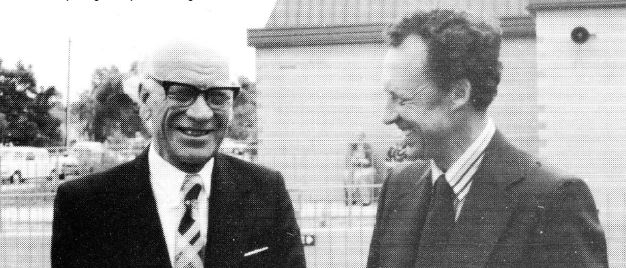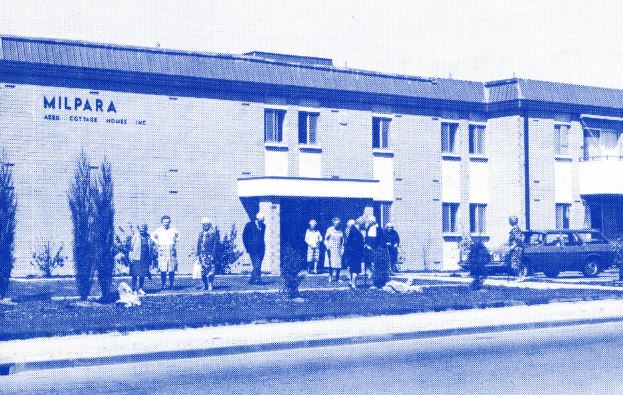John Pitchford – the fifth employee
In 1971, Aged Cottage Homes hired its fifth employee and first General Manager, the late John Pitchford. It was under John that Aged Cottage Homes would transform from a housing provider to one of Australia’s leading aged care organisations.
At the time, Aged Cottage Homes held approximately 550 units located mainly within Adelaide’s eastern suburbs. The majority of units had been funded by friends of Sir Keith – the core of the wealth in Adelaide.

As John recalled in an interview in 2018, by 1971 the organisation was making a loss. However, changes to the Aged Persons Homes Act in 1972 introduced financial help to approved organisations wishing to establish hostels and nursing homes for the aged. At a general rate of $2 paid by the Commonwealth for every $1 raised by the organisations, it prompted an expansion in Aged Cottage Homes services to include hostel accommodation.
John had spent the first months sitting and chatting with residents in their units. With few aged care services and accommodation available such as ‘hostels’, a half-way house between independent living, and ‘nursing homes’ which were for older people with higher care needs, residents told John they were worried about what the future held.
“Many had been abandoned by their families and had rebuilt their community within the groups of units. When you got up you raised your kitchen blind, and your next door neighbour would know that you were up and okay.” John Pitchford
After visiting aged care in Western Australia, John and the Aged Cottage Homes Board completed plans for Milpara, a hostel, nursing home and therapy centre to be built in Rostrevor. The 76-unit hostel was opened in 1974, and the nursing home and therapy centre in 1977.

John recalled that the local council at the time had concerns with the plans for Milpara.
“I put the Mayor and two Councillors in my car and we drove to Ballarat, Victoria to visit an institute. It was like something out of the 19th Century. A huge room with 40 beds each side, without curtains between them. When the council saw our plans, they were very quick to accept them because Milpara was so much different. Right back in those days we deliberately tried to make it as least hospital-like as we could which was quite revolutionary. As it turned out Milpara made a change nationally in the whole concept of aged care, more than what I ever realised at the time.”
The change in approach continued for the next homes that opened: Kapara, which reopened in 1980 after Aged Cottage Homes took ownership from Red Cross, and Perry Park which opened in 1981.
Perry Park’s hostel included individual rooms, communal areas, and a mall where residents could do their shopping, so the home more closely resembled community life.
“The 80s was a change period, we pioneered home care but that was only just a natural progression from where we’d been going since 1971.
In 1980 Wolf Wolfensberger came to Adelaide.
His background was disability, but he talked a lot about valued and devalued people in a culture. All of a sudden what he had to say rang bells, it gave a social science background to the progression that we’d been taking with trying to value the older person, particularly the poor older person.”
Read The ACH Group Story, reflecting on the past and present, and look to the future.



